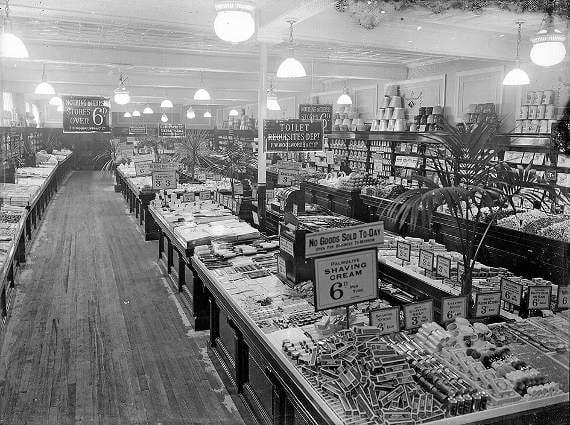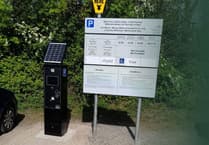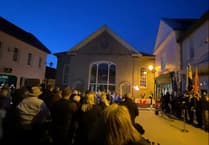Just over ten years ago Woolworths shops throughout the UK closed, with the Brecon shop shutting its doors on December 30, 2008, writes Jacquie Morgan.
It had been part of Brecon life for over half a century – and the Brecknock Museum collection contains fascinating photographs from its early years.
The photographs are part of the Clark Collection and have been exhibited in Brecon and beyond. One shows the new Woolworths store, ready to open in the 1930s. “As with all Woolworths stores, the first day was for viewing only,” explained collections assistant Jacquie Morgan. “There are signs explaining ‘No goods sold today – open for business tomorrow’.
“The famous FW Woolworth & Co Ltd pricing policy is also in evidence, with products priced at 3d and 6d, and large signs emphasising Nothing in these stores over 6D. Woolworths held on to their Threepenny and Sixpenny price limits for many years. When raw material prices rose, their suppliers had to absorb the cost, or item sizes were reduced. For example, in the late 1930s their 10-inch saucepans were replaced with 6-inch ones,” Jacquie continued.
Another tactic was to sell items such as pans and pan lids separately. They even sold a camera in kit form, with each of the three pieces meeting the price promise.
The image also shows the extensive range of everyday items stocked by Woolworths, including toiletries, stationery, and haberdashery. Jacquie added: “We don’t know the name of the first manager of Woolworths in Brecon, but we do know that in the early 1960s the manager was Mr John Pile, who went on to manage the Milford Haven branch.”
The second photo is a studio portrait of the Brecon Woolworths’ Band, in about 1935. “Through our volunteers and other sources, we’ve identified the trumpeter standing on the left as Reg Williams; Millie Williams (nee Finch) is in the back row second from right in white; Doris Wheeler is second from left in white; and seated, second from right, with a drum, is Mrs Robinson of John Street,” Jacquie explained. “It’s interesting to study the different instruments and the style of clothing too.”
Volunteer Alison Noble, who has been working on identifying the occupants of Brecon shops through the ages, added: “My father remembered Woolworths selling metal buckets, emblazoned with a big label saying Sold by Woolworths – which was great advertising when people walked out of the shop with them.”
Alison’s work highlights how shops and trades have altered over the years, as the production of goods and services has changed over the centuries. In the early 18th century St Mary’s Ward contained 29 tailors, 36 shoemakers, and 14 glove makers, amongst many other trades. The pace of change has increased in recent years, and photographs are very helpful evidence of changes in Brecon shops that might not otherwise be recorded.
“Photos like these are such a valuable source of information,” enthused senior curator Nigel Blackamore. “The Clark family have helped the museum greatly by gifting them. Their photos are a vast resource and valuable addition to the museum collection, and we are very grateful for this. The generosity of donors, combined with the research carried out by our staff and volunteers, helps add hugely to our knowledge about Brecon in the past.”
“If any readers can add further details about these photos, or have any other photos or documents about Brecon’s past, we’d be delighted to hear from them,” said Nigel. “You can contact Brecknock Museum on 01874 624121, or at [email protected].”




